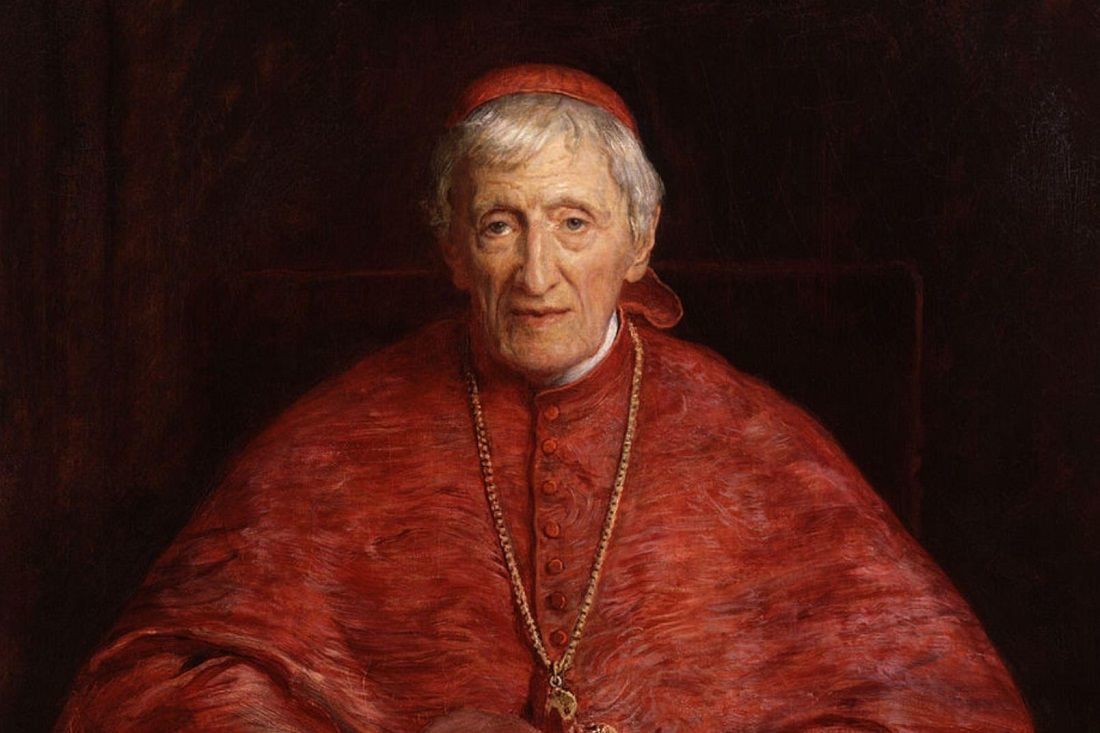St. John Henry Newman
“He laid the finger how gently, yet how powerfully, on some inner place in the hearer’s heart, and told him things about himself he had never known till then,” recollects one listener of a famous nineteenth-century English preacher. Another reminisced: “A sermon from him was a poem, formed on a distinct idea, fascinating by its subtlety, welcome—how welcome!—from its sincerity, interesting from its originality . . . it was like the springing of a fountain out of the rock.”
The preacher in question was St. John Henry Newman, who was renowned in his day for a hauntingly sweet voice and a capacity to bring the Scriptures to life. Newman’s multi-volume Parochial and Plain Sermons have been in print for over a century, but they are a hefty investment. Other editions of Newman’s sermons contain only snippets: while more manageable, these abridgements fail to present his full rhetorical cursus across a sermon and are often bereft of helpful apparatus.
Bridging the gap between these two extremes is Cenacle Press’s
Festivals of Faith: Sermons for the Liturgical Year by St. John Henry Newman, edited by Dr. Melinda Nielsen.
Festivals of Faith “gives the entirety of each sermon, for it is in the whole that the richness of Newman’s thought becomes most apparent. Drawn from his decades of preaching both as an Anglican and a Catholic, these sermons also illustrate the development and consistency of Newman’s body of writing” (xiii). (Newman himself edited his Anglican sermons to ensure their compatibility with Catholic orthodoxy.)
Festivals of Faith contains twenty-two sermons on: Advent, the Immaculate Conception, Christmas, Epiphany, the Purification and Presentation in the Temple, Septuagesima, Ash Wednesday, the Annunciation, Passiontide, Holy Thursday, Good Friday, Easter, the Ascension, Pentecost, Trinity Sunday, Corpus Christi, the Sacred Heart, the Transfiguration, the Assumption, All Saints, All Souls, and Christ the King. Nielsen provides a helpful Preface situating Newman’s preaching, a brief introduction at the beginning of each sermon, and useful but not overwhelming footnotes throughout. A Biography of Newman’s Writings is brief but comprehensive. The only lacuna of the volume is the lack of an index. Even so, Festivals of Faith is both thoroughly pastoral and thoroughly scholarly, without one aspect dwarfing the other.
Dr. Melinda Nielsen
Nielsen’s pairing of sermons with feasts is excellent, despite the differences between Newman’s calendar and our own. For the Feast of Christ the King, Nielsen has chosen the sermon “The Secret Power of Divine Grace.” As she explains:
Although the feast of Christ the King was established relatively recently by Pope Pius XI in 1925, Newman persistently taught that Christianity is both a kingdom “not of this world” (John 18.36) and yet a true kingdom indeed. Ruled by an all-powerful and wise King, Christianity has laws and ethics; bishop-princes and priest-ministers; its own rights and duties, banner, citizens, and soldiers. Yet unlike earthly powers, Newman declares, “it was a conquest, not of the body, but of the heart.” For the human person is insufficient for his own happiness and earth does not provide an object worthy of him. As J. R. R. Tolkien, himself a spiritual heir of Newman and raised by an Oratorian priest, puts it: the Creator “willed that the hearts of Men should seek beyond the world and should find no rest therein.” Man’s destiny is supernatural and only Christ’s “most gentle rule” (Collect) can give him peace (280).
For All Souls’ Day, Nielsen offers the reader Newman’s “Tears of Christ at the Grave of Lazarus.” “Every human gesture, word, and deed of our Lord is simultaneously
that of the infinite, omnipotent God,” Nielsen writes:
Thus, as Newman emphasizes, “to understand them we must feed upon them, and live in them, as if by little and little growing into their meaning.” When Jesus weeps, it is not simply the impulsive movement of human sympathy. We behold the deliberate tears of God at sin and death, “the bowels of compassion of the Almighty and Eternal, condescending to show it as we are capable of receiving it, in the form of human nature.” And such divine compassion comes at his own cost — Christ himself voluntarily descends into the grave to free each soul, like Lazarus, from the stench and wrappings of sin (270).
So much for white vestments and cries of Alleluia at funeral Masses!
James Tissot, “Jesus Wept”
Other pairings are more direct. The sermon for Christmas Day is Newman’s “Mystery of Godliness,” which he preached during the Christmas season of 1837 while the Anglican vicar of St. Mary the Virgin in Oxford. Similarly, “The Difficulty of Realizing Sacred Privileges” was preached on Easter Sunday in 1839 and hence is the selection for the Feast of the Resurrection.
Festivals of Faith makes an ideal companion to the liturgical calendar, both old and new. I recommend it to all Newman scholars, homilists, and lovers of the Church year. Melinda Nielsen is to be commended for applying her scholarly acumen to one of the Church’s greatest preachers and thinkers, thereby making him more accessible in our own day and age.
This review first appeared in Antiphon: A Journal for Liturgical Renewal 27:3 (2023), pp. 375-77. Many thanks to its editors for allowing its publication here.



_-_James_Tissot.jpg)